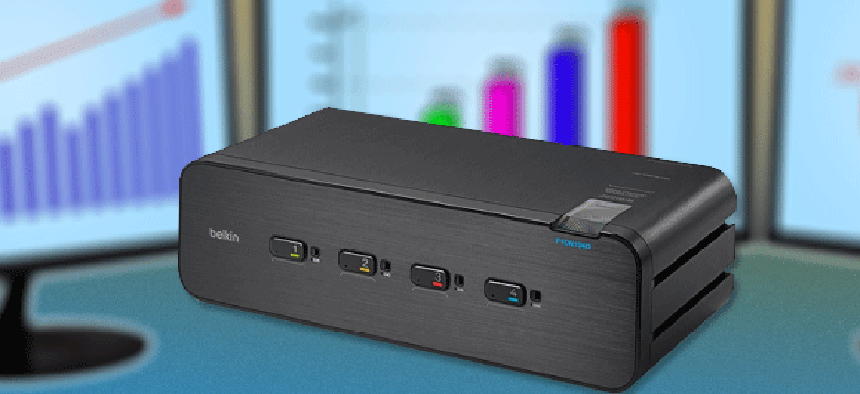Belkin brings secure KVM to DisplayPort


Connecting state and local government leaders
The switch, the first secure KVM for Display Port, would allow government users to access secure and nonsecure networks using a single monitor.
Many government agencies rely on keyboard video mouse (KVM) switches to combine different PCs or even video feeds into one monitor. Users simply push the front side buttons to change feeds. The GCN Lab has reviewed several over the years, with the latest government-specific trend being secure KVM switches, which allows government users to have a classified and a nonclassified network sharing the same KVM switch and the same monitor.
For the most part, secure KVM switches have been restricted to just DVI and VGA ports, though in recent years we have started to see HDMI used within the secure environment. Belkin now brings the other major video standard, DisplayPort, to the secure KVM arena.
The Belkin DisplayPort KVM Switch will work for civilian government and Defense Department users who handle sensitive or confidential information and need a seamless, coherent environment for working on multiple networks with different security levels.
DisplayPort is increasingly popular with the government sector because it offers high graphics resolution in a nonconsumer HDMI format. Unlike HDMI, DisplayPort cables are securely fastened, which minimizes down time that results when a loose cable is dislodged. In addition, no licensing fees are required, as with HDMI, and DisplayPort is significantly thinner and smaller than DVI.
Although DisplayPort adoption is on the rise, there are security concerns involved with the transfer of information beyond display signals, making data vulnerable and security a challenge. Belkin is the first vendor to develop a Secure KVM Switch with support for DisplayPort technology. The switch, which is Common Criteria validated to EAL 4+, includes security mechanisms to protect DisplayPort channels and prevent leakage of information between connected computers and displays. These mechanisms provide isolation even if two connected computers are infected with malicious code attempting to target the KVM.
"Belkin works side by side with government users to understand the real challenges associated with cybersecurity,” said Luis Artiz, director of product management for Belkin International’s Business Division. “These insights are factored into the design of the Secure DisplayPort KVM and our strategy to expand on Belkin's secure product line."
The Secure DisplayPort KVM Switch also features protected DisplayPort channel switching, which is a security mechanism to protect the DisplayPort channels, preventing leakage of information between connected computers and peripherals. All channels can also support all DisplayPort 1.2 resolutions up to 3,840 by 2,160.
There are dedicated processors with emulators for every port and isolated port paths for video, audio, peripherals and smart-card readers prevent data leaks between computers. All are served through unidirectional data paths and optical data diodes to prevent peripherals from being used to breach systems.
As with most secure KVM switches, the new DisplayPort KVM Switch can detect USB devices and won't allow those with storage capacity to connect since they could be used to steal data. It also has an internal electrical sensor that renders the unit inoperable if the case is ever opened.
Belkin’s DisplayPort KVM Switch will be available starting Aug. 1.




